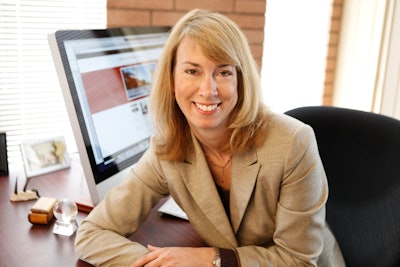Numerous state legislatures are in the news recently, asking their campuses to report budgets and resources devoted to diversity, equity and inclusion (DEI) efforts, and for a list of the programs, services and efforts focused on DEI.
Their goal? To identify and cut DEI in higher education.
Florida has become the poster child for the state leading this conservative backlash against DEI, but several other state legislatures including Virginia, Alabama, Georgia, Idaho and Iowa are joining in. Model state legislation has been written — and if passed, would prohibit colleges from hiring DEI officers, spending money on DEI, and bar trainings that instruct staff/faculty to identify and fight against systemic racism.
Because DEI has largely not been institutionalized in most campuses — these efforts to “cut” DEI are likely to be successful. The cuts can be executed quite easily as DEI efforts are isolated and siloed — beyond the mainstream work of campus.  Dr. Adrianna Kezar
Dr. Adrianna Kezar
One of the main reasons that DEI efforts are threatened on campuses across the country is because DEI has not been made part of the campus culture or normative practice. Instead, it has remained outside our normal ways of conducting the business of the universities and colleges. DEI efforts are more easily under threat since the cuts can be largely siloed to a chief diversity officer and office. As conservative politicians have become aware of these DEI resources and offices, campuses and their DEI personnel and offices can become easy targets for political attacks.
But we put the targets on ourselves. For decades we had the opportunity to build DEI into everyday campus practices and policies and we did not. Now, it’s time to change this paradigm.
The research team at USC’s Pullias Center for Higher Education recently studied campuses that have made progress on eliminating equity gaps and advancing their DEI agendas. We’ve identified Shared Equity Leadership (SEL) as the approach for making true progress that creates culture change. The SEL approach deeply and successfully embeds DEI into day-to-day campus operations.
In SEL, equity becomes everyone’s work and not the work of a Chief Diversity Officer or DEI office. By embedding DEI in faculty, administrative and staffs’ roles throughout the campus, the work is not made a target for cuts. Not only does this approach shield DEI from cuts but also ensures the work has the critical mass of human resource to be embedded and move forward to transform the experience of students to be more positive.
This leadership model supports the organizational structure to broadly distribute work, provides the planning and accountability apparatus so that the work is sustained over time, even as it is distributed among many more people. What’s more, campuses that have implemented the SEL approach become much more diverse in terms of hiring, promotion and retention of faculty and staff from diverse racial backgrounds. And the campus leaders dismantle problematic polices and practices that have stood in the way of equity.
Can SEL fully shield DEI from attacks? Not completely, as can be seen from the critical race theory bans, but it can certainly make it more difficult for legislatures to locate and isolate DEI for broad-scale cuts and bans. And if equity is routinized more as a good practice — say disaggregating data to look for equity gaps — it is much harder to see the activity as problematic given it is hard to grab headlines for following sound administrative practice.
Dr. Adrianna Kezar is the director of the USC Pullias Center for Higher Education and the Wilbur-Kieffer Professor of Higher Education at the USC Rossier School of Education.





















